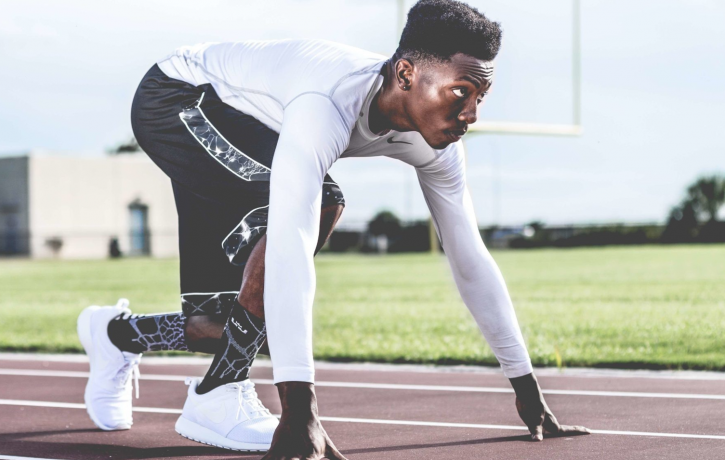in Joints & Muscles, Sports Injury
Runners Knee

In my teenage years, I was taught by a PE teacher who often barked from the sidelines “Keep it simple stupid” which at the time confused me. Although now after a good few years, I get his point of trying not to overcomplicate things, why in football try to beat two opponents when a simple pass to a teammate would turn defence into an attack? When working on the human body the same theory can be used as we try to understand a minefield of medical terms, long words and abbreviations.
I would hazard a guess a lot of people would have heard of tennis elbow but would the same amount recognise Lateral Epicondylitis? Golfers Elbow being Medial Epicondylitis? Runner’s Knee (yes, it is a thing) being patellofemoral pain syndrome or in some cases iliotibial band syndrome?
The latter injury is now the most common sporting injury according to generally accepted research but what is it? Keeping it simple Runner’s Knee is when pain is felt below or in the knee, usually due to overuse of the tendons around the knee joint. Contrary to what the title suggests and in my own experience it is far from just runners who suffer from this injury. It is extremely common in plumbers, landscape gardeners, tilers or any job requiring your knees to be bent for a considerable time. Even sedentary jobs, where the knee is bent for long periods whilst sitting, can trigger tendinopathy. So why complicate things with two versions? Well, simply there are different muscles that are overused that cause pain in two distinct areas.
If pain is present on the lateral side (outside) of the knee then the likely cause could be Iliotibial Band Syndrome (ITBS). The Iliotibial Band is a large tendon-like structure situated outside the thigh from the hip to the knee. When the IT Band tightens an individual can feel pain whilst walking downstairs but not whilst walking up. ITBS tends to be the version that runners, cyclists or someone who walks long distances suffer from.
However, if the pain is felt on the anterior (front) of the knee, around and often underneath the knee cap then the cause is likely to be Patellofemoral Pain Syndrome (PFPS). An indication of this version would be an individual being in pain walking upstairs AND still in some discomfort whilst walking downstairs. The cause of the pain can be and is often repetitive use of the Rectus Femoris muscle which runs vertically down the thigh attaching below the knee.
If the above feels very familiar to you then please get in touch with the team at The Body Matters after an initial assessment we will be able to start the treatment process and advise on a rehabilitation program. Treatment for such injuries can and are varied as (again, simply) everybody’s body is different with some reacting better to certain treatments. Whether it’s sports/deep tissue massage, other massage techniques such as myofascial release or soft tissue release, dry needling (medical acupuncture) or manual therapy treatments The Body Matters team has the expertise to cater for individual needs.
Call The Body Matters on 01702 714968.
This article was written by Jon Ward.
- How Pushing Too Hard Can Affect Your Health - 23rd April 2025
- Finding Hope and Comfort Through Pain - 21st March 2025
- Non-Pharmacological Solutions for Managing Pain in Parkinson’s - 19th February 2025
